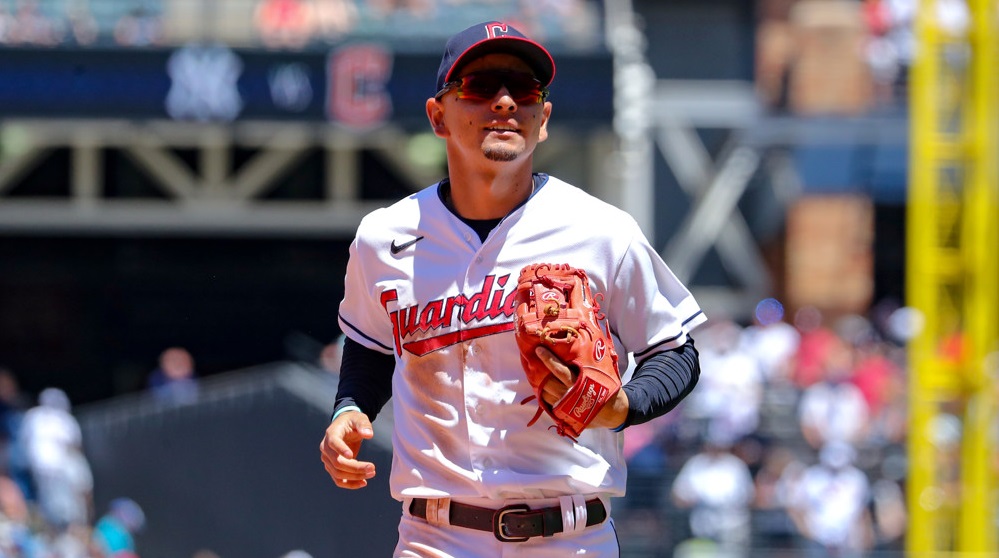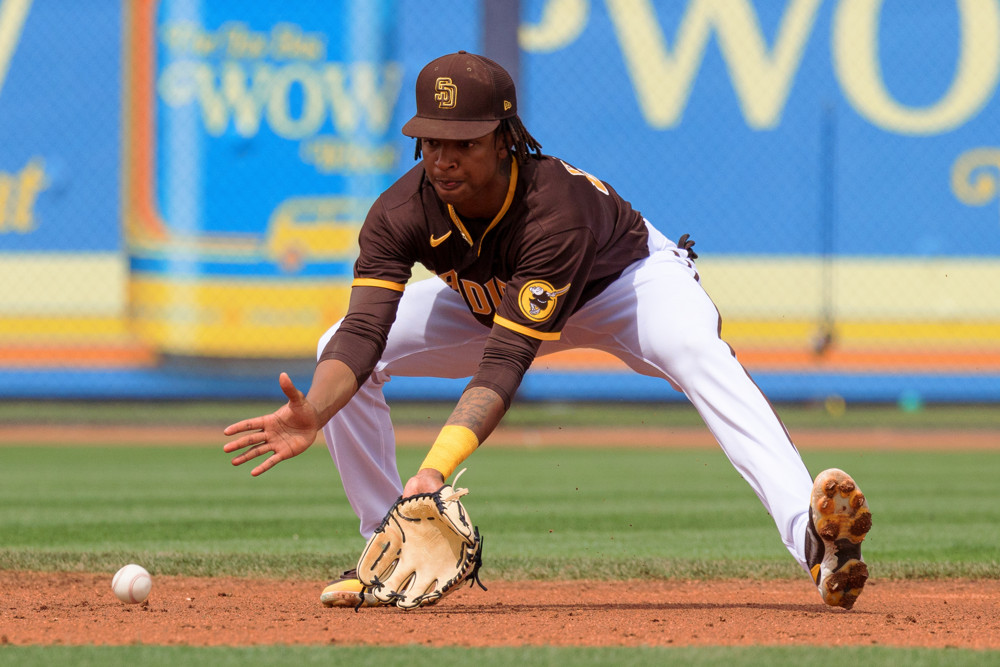Hall of Famer Ozzie Smith is arguably the greatest defensive shortstop of all-time. Known as ‘The Wizard’ for his ability to make impossible plays, Smith played 19 seasons with the Padres and Cardinals, winning a record 13 Gold Gloves, and a World Series with the Cardinals in 1982. He was elected to the Hall of Fame in 2002. He talked to Mark Simon last November.
This essay is excerpted from The Fielding Bible-Volume V, available now from ACTASports.com and Amazon.com
Simon: “What does the idea of defensive excellence mean to someone like you?”
Smith: “Defensive excellence, as it is with everything, is trying to be as consistent as you can possibly be. When people talk to me about playing shortstop, the thing that comes to mind is great plays. But I think great plays are the result of keeping yourself in a position to make the routine play.
So much of what I did, or any shortstop for that matter, was instinctive. It’s an instinctive position. A shortstop or middle infielder is somebody who should be able to cover ground and don’t have to play to a scouting report. The scouting report is still very important, but you still have to be able to make plays if a ball is in a certain area. For me, it’s freelancing and improvisation. It’s all those things melded into one that hopefully make you into a consistent player. Making the routine play every day. Great plays will take care of themselves.”
Simon: “With that in mind, when you go into a series with a team like the 1985 Mets, what was the defensive preparation like for you and the manager, Whitey Herzog?”
Smith: “I don’t think there’s any way to do it. You can have the best scouting report in the world. I can remember in 1982, the first game of the World Series against the Brewers. We went strictly by the scouting report. It seemed like we were out of position on every play. After that first game, we realized we just needed to do what it is we do. Everything is played off straight-up. We may shade one way or the other. There were very few guys that were strictly pull hitters. Guys like Dave Kingman, you could shade him a little bit more to pull than Tony Gwynn, who sprayed the ball all over. We still have to figure a way to get anybody out. That comes from being able to be improvisational, making plays that are not right in your vicinity.”
Simon: “What do you think of the things that have come into play in the last 10 years with defensive positioning?”
Smith: “Everything has its place as long as you don’t overcook it. The bottom line for me is being consistent in the things you do. As a team, it’s never going to change. If you want to be a good team, you need to be strong up the middle. You have to have a good center fielder, hopefully a good pitcher, catcher, shortstop, second baseman. If those things are solid, it gives you a good foundation to work from. But if you’re weak at those positions, and at being able to make that routine play every day, you’re going to struggle as a team.”
Simon: “If you were going to tell someone watching the game what they should be looking for from a shortstop, what should they be looking for?”
Smith: “It’s movement. A good shortstop, good infielder is gonna have good lateral movement left and right. Someone who always seems to be in the vicinity of where the ball is. A lot of that has to do with a pitcher pitching to his scouting report. If a pitcher can’t pitch to a scouting report and throws balls to where they’re not supposed to be thrown. I had a lot of fun with my pitchers because I’d tell them I was out there to catch their mistakes.
That in reality is what it’s all about, to cover the mistakes your pitcher may make on any given day. I prided myself on being able to make and complete a play without being in the scouted position.”
Simon: “The advanced defensive metrics surprise us sometimes and tell us something we didn’t know. In 2019, they liked Paul DeJong a lot and I was curious for your take on him as a shortstop.”
Smith: “You know why? Because Paul DeJong was very consistent at making the routine play. That’s what a team depends on—when you go to the mound for a meeting, saying ‘Get a ground ball to this guy.’ That’s the guy you want to be. Paul DeJong is one of those players who’s not flashy, like Brandon Crawford of the Giants, but very consistent at what he does.
I’ve had the chance to spend some time with Paul. He’s a bright, eager-to-learn young man who is just getting better and more consistent each year. That’s what we talked about.”
Simon: “Do you feel the same about Kolten Wong?”
Smith: “Kolten came into his own this year, won his first Gold Glove. I think you’ll see Paul do that as well. His consistency is something that can’t be ignored.”
Simon: “Who do you see that reminds you of you?”
Smith: “The position has changed so much from a defensive standpoint. From a prototypical shortstop standpoint, myself and Omar Vizquel probably paralleled each other more than anybody else because we were able to cover a lot of ground and not be dependent on positioning to make a play. I always looked at that as very, very important, to be able to cover mistakes, a bad hop or whatever. The ones who are able to do that are the ones who get a look at making the Hall of Fame.”
Simon: “You played with a lot of players who young players would do well to emulate on defense. Can I get your take on a few, starting with Keith Hernandez?”
Smith: “Best first baseman I ever played with. He made it easy for middle infielders because you didn’t have to be perfect with your throws. He had the improvisational ability at first base to know when to come off, when to stay on the bag. To me, a Hall of Famer.”
Hernandez won 11 Gold Gloves, most of any first baseman
Simon: “Willie McGee?”
Smith: “Again, a guy who could cover mistakes. He covered a lot of ground in the outfield. Someone who was very consistent. You knew what you would get every day. That makes teams great.”
McGee won three Gold Gloves in center field
Simon: “Tony Pena?”
Smith: “Great arm. A good defensive player. Fun to watch. One of those guys who came up at a time when catchers had the ability to throw a lot of runners out.”
Pena won four Gold Gloves
Simon: “Terry Pendleton?”
Smith: “I’d rate him right there with Mike Schmidt at covering ground. He was one of the best at going back on the ball with his back to the infield. Surprising when you look at his size, you don’t see someone with great range or a great throwing arm. But he was very, very consistent.”
Pendleton won three Gold Gloves
Simon: “Is there someone from your era who doesn’t get his due defensively?”
Smith: “I had a chance to play with Ken Oberkfell, who was also a great third baseman. They make the shortstop’s job a lot easier. It allows the shortstop to play more up the middle. It was easy playing over there because you knew that the ground to your right was covered. It allowed everybody else to move an extra step to their strength. When I look at the best teams I played with. The 1982 team and 1985 team were teams that moved in unison. If I moved a step, you moved a step. Ground was covered.
That’s not taken into consideration, but when you look back, we operated as a unit. If I moved on the field, I had to let my second baseman, third baseman, first baseman know I moved. It makes everybody else’s job easier.”
Simon: “When I was little, I watched The Baseball Bunch and I remember Ozzie Smith teaching me that ‘Wall Ball’ (throwing a ball against a wall and catching it) was a great way to practice. What tips would you give to a player who moved beyond ‘Wall Ball’ regarding learning the intricacies of shortstop?”
Smith: “There’s no substitute for blood, sweat, and tears. As blessed as I was from a defensive standpoint with my hand-eye coordination, one of the favorite parts of my day was going out and taking ground balls. It put me in a certain place of peace. It was a release for me to do that. If there was a bad spot on the field, then it was important for me to know so I could anticipate a ball taking a hop in a certain place.
Even when I played on AstroTurf, people say it’s easier because you got a true bounce. But you had to play around seams in the turf. In some places we played, the seams could be right in front of you. So you had to anticipate what the ball is going to do in a certain spot. That’s one of the reasons I took ground balls every day. One thing I try to tell kids today is that in life, you only get out what you put in. If you don’t put anything in, you shouldn’t be getting anything in return.”



